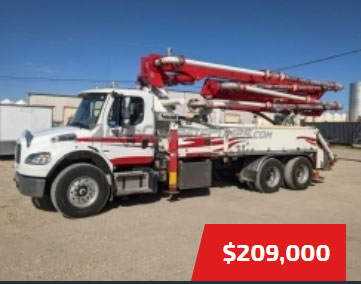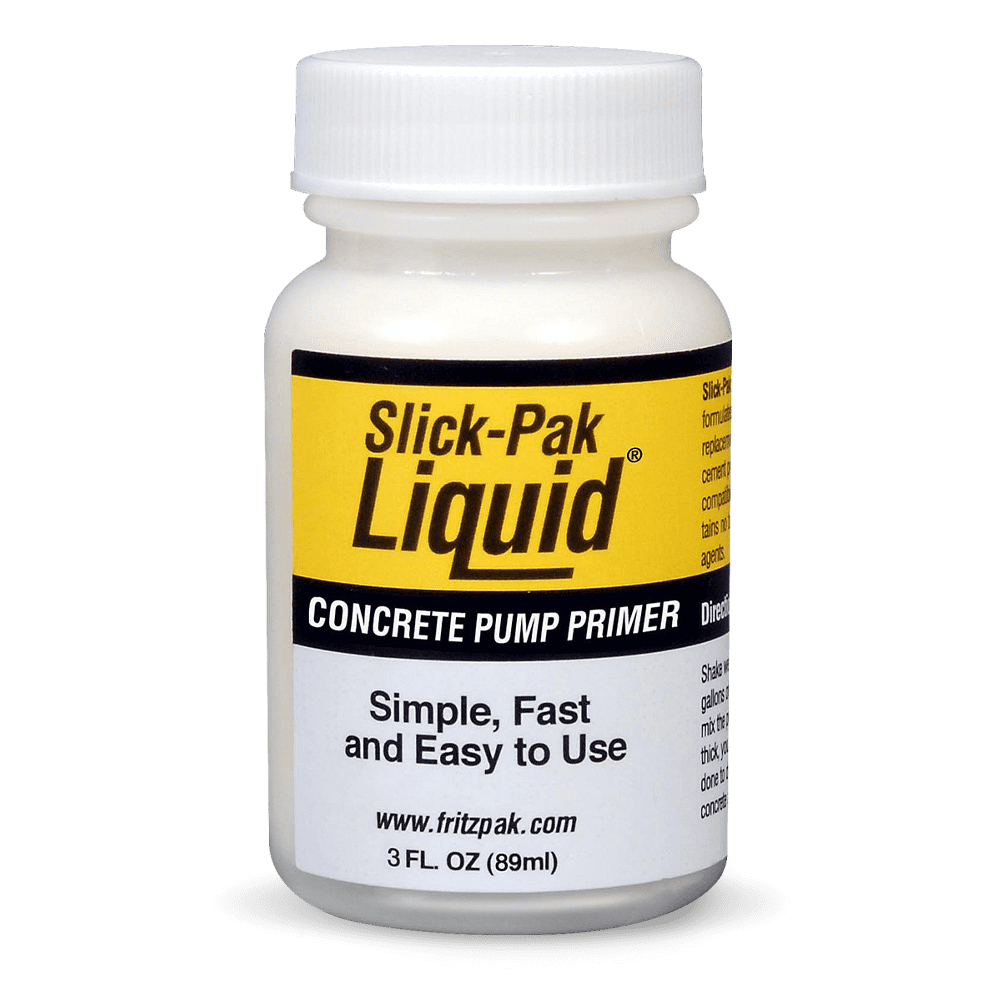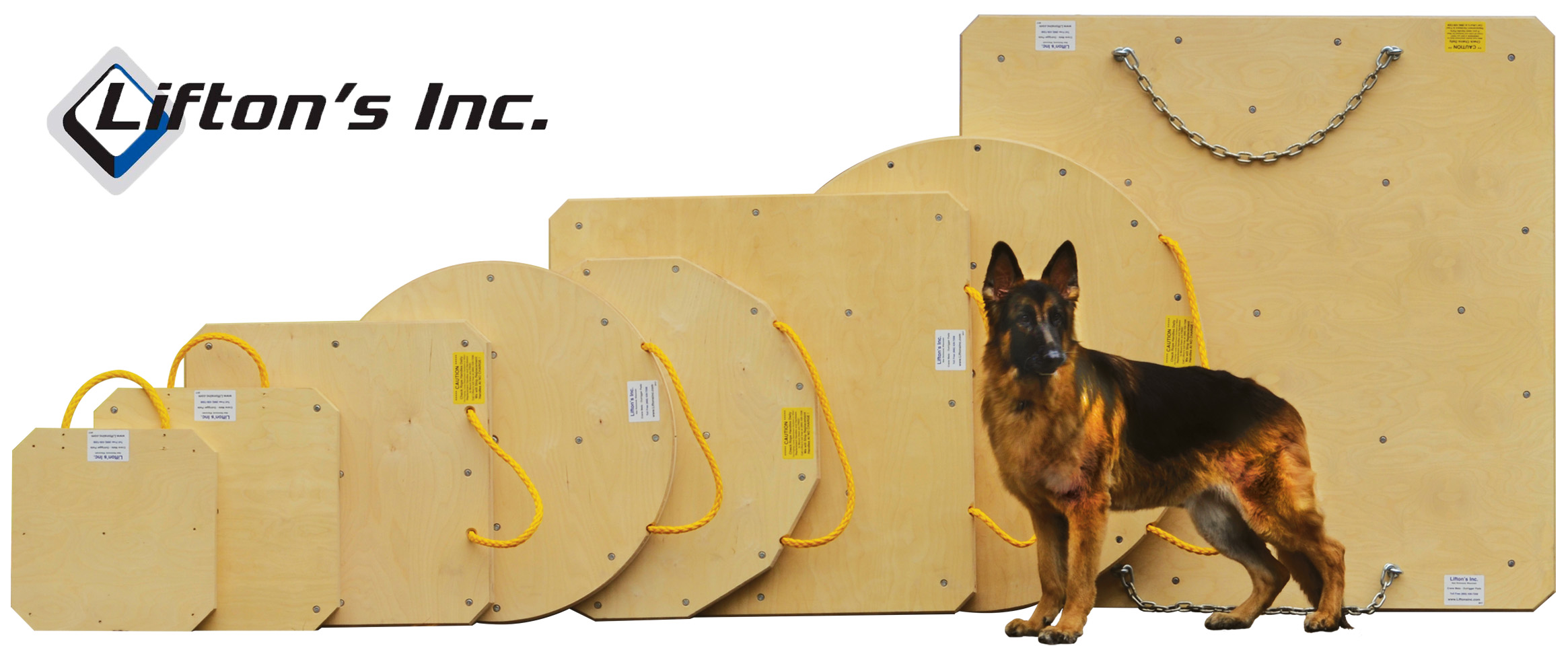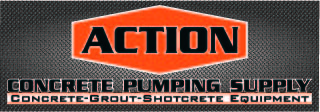Pump Surge and Boom Bounce
Pump Surge and Boom Bounce
Anyone that has been pumping for very long has seen it, felt it or been asked about it. That surge between the strokes of the pump. When its in a boom, its a more serious issue that can cause injury to the nozzle man and even damage the boom itself. Boom surge is the biggest thing that prevents good operators from looking like great operators as far as their boom handling ability is concerned.
First, lets look at what this surge is and how it effects a ground system. Surge is actually more hesitation than it is surge. when the 2 cylinders of the pump alternate, or cycle, there is a slight delay between the pushing effort of the pump. This delay in the push, shows up at the discharge end of the hose as a drop in the flow. then, suddenly the flow resumes and the hose “surges” back as the flow resumes. If you can relate to an engine and it’s exhaust pipe, you can feel the pulses of exhaust as the engine runs. The concrete pump is like a 2 cylinder engine and the pipeline is like the exhaust system. What you see and feel as surge, are the brief hesitations between the power or exhaust strokes. The difference being that the exhausting or discharge of a semi solid material is much more resistant and violent than a hot gas being expelled. An equal and opposite reaction. With weight and mass come resistance, when resistance is encountered, we have the opposite reaction, which we see as surge.
This is the law of relativity at work. “For every action, there is an equal and opposite reaction”. Like when there is a gun shot, the gun kicks. That’s reaction of the combustion of the powder that has expelled the bullet away, and the kick is in the opposite reaction. The pump works in the same way. As the pump pushes, there is resistance, so when it stops pushing for a second, that resistance is relieved so its gone neutral for a second. Then it pushes again and the opposite reaction is again felt thru the motion of the flowing concrete. If the mud were flowing steadily, and NOT surging off and on, it would be easy to hold in one place and the “surge” would be minimized.
There is a way....
Not 100% effective since with cylinders we will always have transition to the next stroke, and again, like an engine the more the cylinders the smoother it runs. We don’t get as many cylinders in a concrete pump because of the limited space and the size and weight of all the components, so we make do with 2 and do what we can to minimize the change over time or dampen the motion that we already have to try to minimize the spikes that come from the start and end of each stroke. What we need for the line pump is a way to keep forward motion on the concrete for that 1/2 second that the pump is not pushing while the cycle changes over. We almost need another piston or some stored energy that can be released between each stroke change. We do have surge chambers, which are nothing more than a vertical pipe set on a T fitting in the ground line if you’re running 4 or 5” line, and this pipe will be capped on one end, so when the concrete is flowing thru the line, it will also be forced up into the pipe too. there will be some trapped air up there, and gravity will also want this concrete to drop, but it cannot because the pressure in the line is greater as long as the mud is flowing.... but when that 1/2 second comes around each stroke change and the flow stops briefly, the mud in that chamber that is stored can now be released and it can drop since the line pressure has dropped for a split second. During this brief time, that mud will then try to apply pressure one the ground line and since it cannot go toward the pump, it will try to move the mud toward the discharge end...so we now have what is a semi continuous flow, greatly reduced surge for that instant that the pump is changing over to a new stroke,. while we still have forward flow and that is all that it takes to smooth out the surge. This does not eliminate the surge entirely, but it does reduce the amount of difference in the amount of output, which is either full or none, so it appears to be smoother. We now can hold the hose easier and we’ll also have less system trying to creep back with each stroke. This is effective for short pours. Eventually this vertical chamber will set up with the mud in the upper end or top, that will be the first mud that was sent thru the system. It may be hours old and its just going to set up since it has no way to totally empty itself each stroke like the pump cylinders do. But for that 3 or 4 hrs maybe, we have anti-surge that is economical and effective for the line pump.
On pea-gravel pumps there will be a 3rd cylinder on the manifold of the pump. This is a nitrogen chamber that is the same as the surge chamber that we just discussed, but its powered by a nitrogen gas charge that is adjustable and can be set to equal the head pressure of the pump. The gas charge will work a piston that applies good pressure to the material as the pump takes its 1/2 second to change over so there is always pressure applied to the concrete. This equals constant flow. The thing about this system is that the only way that it can work, is to have the required head pressure to push the chamber piston up to load the chamber, then the gas can push it back down. its not a simple mechanical, but a reaction device. The gas can be adjusted so even a little bit of head pressure can be compensated for and higher pressures and longer systems can be set so that there is minimal surge regardless of the mud, the speed, or the length of the line. This nitrogen surge chamber seems like it would be the answer to all pumps and their surge issues, since all piston pumps have some amount of surge, but the nitrogen chamber only works on small line pumps... Why?
Because the system on a line pump will almost always be laying flat. So when that brief period during change over comes, there will not be a residual head pressure that will try to send the mud back into the hopper. On a high rise this is a problem since there may be 40 floors of vertical pipe full of mud that has gravity trying to send it back to where it came from. In a flat line, this is not such an issue and the nitrogen chamber works very well. The boom pump has the same problem as the high rise. It always has gravity trying to send mud back during that split second of valve change. This prevents us from utilizing a surge chamber, especially a powered chamber to try to keep the mud flowing forward when gravity is trying to pull it back. Rule to remember, gravity always wins.
If we installed a powered chamber on the boom, above the mud that’s trying to fall backward, then it becomes useless since the mud is still falling backwards. If its mounted near the hopper, it will simply assist the free falling mud in its effort to return to the hopper and the instant that the valve moves, the chamber will then take its energy and the mud that’s trying to fall back and it will all blow back into the hopper, causing a mess for sure and actually creating more surge because the pump then has to make up all that mud that slipped backwards... It just won’t work. So, what’s left with boom pumps? There must be away to either lessen the change over time or to maintain some forward tension on the material so its momentum is not lost and the surge is elevated.
Actually there are several ways, but all depend on complex hydraulic designs and the physics of moving semi-fluid solids in contained spaces or in this case, pipes. When we can we will take advantage of the energy that we already have available in the system. One way is to speed up the valve change so that the next stroke happens as fast as possible. The other way is to use the stroke itself to absorb the shock of each stroke start.
The first, speeding up the change over is the simplest way and the most common. The way that we most often see is the use of faster moving oil and valves. Some designs call for a pre-charge that is a build up of pressure that is there to do nothing but move that cylinder that operates the valve. The instant that it gets the signal to unload its stored energy, it reacts and the valve responds accordingly, quicker with more authority. This works pretty well and is effective to a point when it has the valve moving as fast as it possibly can. When this system has reached its maximum changeover speed, there is usually an additional trick that’s used to aid in this effort to eliminate the surge. Surge is an oscillation, a series of movements in a pattern, like a frequency. This happens every time the concrete valve must change direction, so we get a corresponding pattern developing. Like the ripples across a pond when a rock is tossed in the water, they are the series of waves that we see as surge. When we can only do so much to reduce the strength of each wave, by a quicker change over, then we have to also look at the frequency. If a pump cycles at 28 strokes a minute, we will then have 28 waves or surges per minute also. Each being it’s own problem to the guy on the sticks and the man on the hose. We can reduce the frequency by reducing the number of strokes, and the trick here is to maintain the rate of production while reducing the number of cycles. This is done with larger more efficient pumping cylinders. There is a trick to this though..... We get bigger barrels so that we can pump as much in 2 strokes as we were with 3, and we have then also messed up the ratio of the hydraulic pressure vs the concrete pressure. What this means is that the bigger the concrete cylinders, the less pressure that we are able to apply with the same size hydraulic cylinders. Sure, we could just get bigger hydraulic cylinders also, but then they require more oil to make the same amount of motion as the smaller ones did. We could get bigger Hydraulic pumps, but they would then require more effective cooling and more space to mount in the tight frame of a truck. So, we are now trading away power for volume. Its a fair trade to keep the volume up when we don’t usually need all the power that is available, but it’s like a car. When you need to step on the gas, you need the power to be there when you need it, and the typical cruising speed is not important, its the power that you need now. So we have to have it and we can with some other design changes. But, when we want to run at a steady speed which can now run higher than before since we’re using fewer cycles and producing the same, we can cruise all day without the reaction waves or surge that we had before when we had to have more cycles per minute. We can redesign the way the pump discharges and make that more efficient so we’re not loosing as much of the available power and we can use different size hydraulic cylinders and hydraulic pistons is the proper ratio to the concrete barrels and pistons so we can keep a good ratio of pressure vs volume. Its a trade, and we will loose some ability to generate pressure when we go for higher volume and higher output. Each stroke is the key to making this fast change over type system operate well. When we have reduced the number of strokes from 28 to 20, we have a lower cycle rate or a lower frequency. That is a measure of time, and when we have more time between strokes, there is time for the energy that’s stored in motion, to dissipate so that when the next stroke change arrives, the urge to bounce or surge has ended because its been long enough for that energy to be absorbed or used in the actual stroke itself. The bounces or surges are not compounding each other when they come in rapid succession in a small volume pump kit. With the larger output and the much faster more efficient change over, we can eliminate a huge portion of the surge and boom bounce that is the result of surging concrete flow. The equal and opposite reaction is now still working as it always did, but it’s doing it with less energy and less cycles which mean less physical reaction that we can see or feel. What we end up with is a faster valve change over and a larger faster pump kit that cycles much slower. That alone will do as much as anything else will do to dampen the surging flow of the concrete. We’ve really advanced in the design of these pumps with all of this being considered when we used to just be worried about it coming out of the end hose. Now, we have the ability to pump at 200+ yph and do it with the boom barely moving in reaction to moving all of that weight so quickly. Its design technology at its very best.
The other method of dampening is more exactly what it sounds like. A shock absorbing system for the concrete pump and system. This has many of the same principles but differs dramatically in the hydraulic design and technology. This will also have the large volume pump kits, but it can also be used with the smaller more common pump cells. This is a completely different theory that also works very well and has the ability to work is the many different boom and line pump designs since its a hydraulic design and not a system or mechanical design. This method is more complicated and has more parts, but it is more effective. If you liked the other idea, you’ll love this one.
The way this system works is pretty easy in theory. It’s like the shocks on the car that absorb the bumps and smooth out the ride. This system utilizes the pistons themselves to do this by way of variable speed and pressure sensing during the stroke of each piston. When a cylinder has pulled concrete up into the barrel filling it, it is a known fact that the barrel is only 95% full since it draws concrete in by way of vacuum. What this means is that the piston must move some before there is the vacuum that will pull the concrete, so its always a few inches ahead of the mud. When it reaches the end of its travel, that gap still remains and is the source of a portion of the pressure spike that we will see or feel as surge. This system also sets itself to required pressure and not available pressure so that there is not an excess of power applied to any stroke. This piston as it reaches the end travel and starts to push on the concrete will jump at max volume the first few inches so that it can immediately fill that void that was left in the cylinder from sucking mud up there. This helps to maintain a constant application of tension or pressure on the material, so there is reduced surge there. The rest of the tricks get more complicated, but all work based on this hydraulic design that allows each stroke to begin at high speed and then back down to the pre set speed of the pump. this also dampens the stroke and keep the material moving. This is usually done electrically since electricity moves many thousands of times faster than hydraulic valves possible can, electric solenoids are now in charge of sending the signals to change the stroke direction. When the signal is sent, it is directed to smaller lighter valves that can move instantly with no back pressure on them. The main hydraulic pumps are the key to this, having direct flow to the cylinders, so there are no big, and heavy valves that need to be pushed thru pressurized oil to make a mechanical reaction. The end result is a system that reacts faster and cycles smoother with the majority of the shock of the cycle change being absorbed by the pump and not the concrete that will cause the reaction that we will feel in the form of surge.
In any make of boom pump there are other tricks that we can use to reduce the amount of surge in boom plus system pours...the configuration of the boom helps with a section hanging down and not all of them flat. This allows gravity to keep pulling mud downward in that down angle boom section, which keeps some tension on the system. Then the returning push of the next stroke is not pushing against a stopped system, but one that is still somewhat in motion, so the surge is reduced.
Another thing is boom bounce that can be affected by the shape of the boom. With most booms now 4 section or more, each has a more stable shape. The typical 4 section likes to have the 3rd and 4th both working to boom in and not running any single section in as far as it will go before bringing another in. And none like to have any section brought back in upside down because that causes the loads on that section to reverse and that in itself causes a weird little whipping of that section that was designed to hang with gravity pulling in one direction and not the other. They all have a favorite shape and position and each operator must experiment to find that so he can run fast when he needs to and be able to produce yet still control.
With the information provided here, you should be able to use this to better understand pump surge and with any boom pump, you should be able to combat the natural tendency to surge with your skills and this information.
We will never totally eliminate line surge, but we can counteract this to be more productive and to provide a better performance with our equipment.
Written By Horton, Lee Published by ConcretePumping.com




















.jpg)
.gif)

.jpg)








.jpg)









